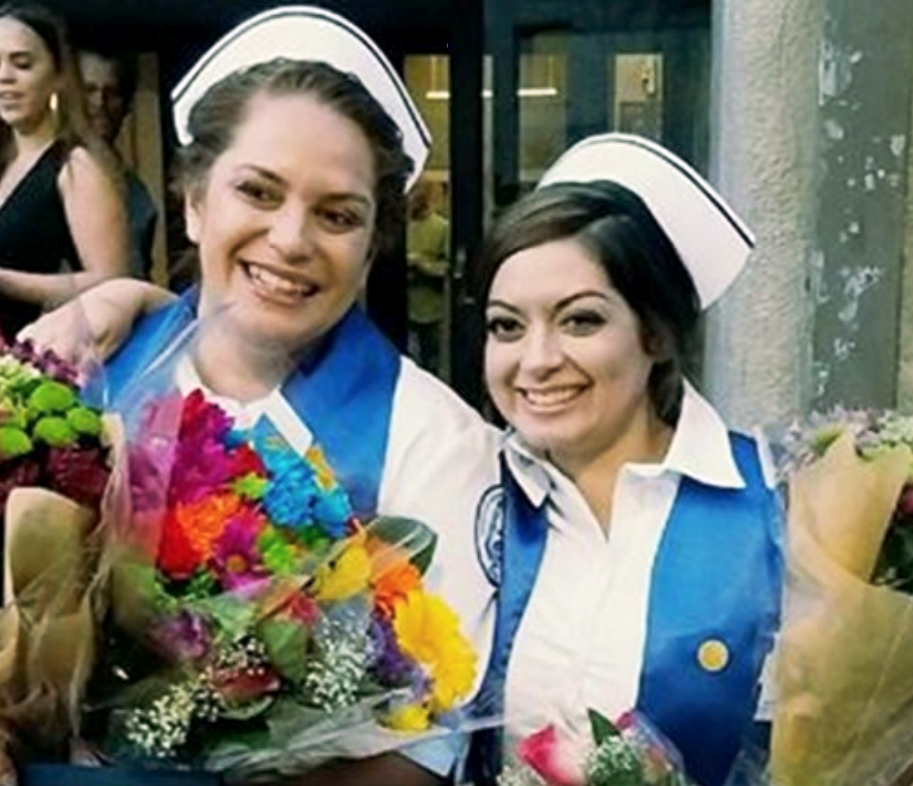Story by Ike Dodson
Office of Public and Employee Communications
As the world reels to recover from and respond to the COVID-19 health crisis, organizations that invested in the future of patient care are leading the way.
During National Nurses Week (May 6-12), CDCR and California Correctional Health Care Services (CCHCS) celebrate the women and men providing essential care inside state correctional facilities.
“I don’t think you could imagine a much more challenging time for health care staff, but our nurses have championed the department’s response to COVID-19 with unflinching resolve,” Liz Gransee, CCHCS Deputy Director of Health Care Communications, said. “Our nursing teams are providing critical care with extreme professionalism and real empathy for the patients we are charged to help.”
Hit the ground RN-ing
Alexis Barba is a rising star at California Health Care Facility in Stockton (CHCF), where staff provides medical care and mental health treatment to over 2,500 incarcerated patients who have the most severe and long-term needs.
Before she was a Registered Nurse (RN) with a Bachelor of Science in Nursing and a Shift Lead at CHCF, and before becoming the department’s representative at state and national conferences, Barba was a student with a dream.
“I was working in an (Emergency Room) doing secretarial work and all I wanted was to be nurse,” Barba explained. “I was in college and doing well in math and science, but I couldn’t get into the RN program.”
Barba became a Licensed Vocational Nurse (LVN) at CHCF in 2013, still a step away from an RN status that would allow her to advance her career and provide acute patient care.
Enter that CCHCS investment into the future of patient care.
A year later, Barba became one of the first two nurses in California to complete the LVN to RN Apprenticeship Program by CCHCS and Service Employees International Union Local 1000.
“It changed my life,” Barba said. “It definitely gave me an opportunity to grow my career in nursing, and it also allowed me to help my family out more.”
Diversity helps CCHCS thrive
Not every person enrolled in the LVN to RN Apprenticeship Program shares Barba’s unique path, but Acting CCHCS Deputy Director of Nursing Services Barbara Barney-Knox said around 75 percent of program students are people of color, and/or from underserved communities.
Being the granddaughter of Mexican immigrants certainly impacted Barba’s career.
“My family’s journey didn’t allow me to settle,” Barba said. “I had to keep going, get better and not give up. My family is really happy with what I have been able to do so far.”
Barba was an easy choice to represent CCHCS at a state-wide apprenticeship program conference in Pacifica and a similar national conference in New York last year.
“Alexis represents the nursing division very well,” Barney-Knox said. “She’s so grateful, and she wants to set an example for her peers, to show them what this opportunity can do for them, how it changes lives.
“She’s very engaging, and understands what it means for her to be a person that others can look up to.”
“We knew if we provided opportunities like this to staff, we would see better outcomes, a higher educated workforce and employees with much greater productivity,” Barney-Knox explained. “Our graduates of this program are soaring to great heights.”
WHO? Nurses, that’s WHO
Statewide, CCHCS employs nearly 7100 nurses — that’s including all classifications.
The World Health Organization (WHO) has designated 2020 as the “Year of the Nurse and Midwife,” in honor of the 200th birthday of Florence Nightingale.
It makes National Nurses Week even more significant, and it gives nurses like Barba an opportunity to pause and reflect on their collective strength.
“I think the best thing about a nurse is that we are always there, on the front lines, despite any concerns that illnesses could happen to us,” Barney-Knox explained. “You put those thoughts away in order to do patient care, and for me, that’s what makes a nurse so strong. A strong nurse is someone who leads and helps others.”
Rising stars at CCHCS like Barba also seem to embody the “Year of the Nurse and Midwife” theme established by the American Nurses Association — “Excel. Lead. Innovate.”
“I think that’s perhaps the most rewarding thing about being a part of CCHCS,” Gransee added. “All over the state you see people excelling, leading and innovating at their facilities. Health care staff have reminded us what it truly means to be a ‘First Responder.’ A nurse is often the first person you see when you need help the most.”
